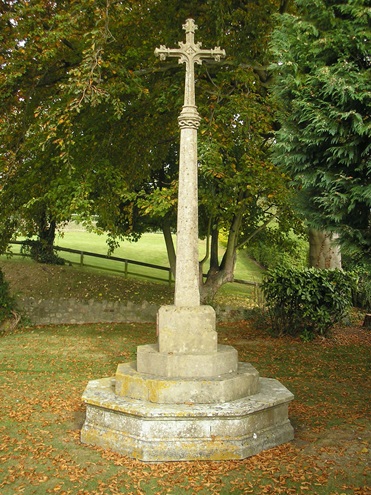Ralph Followell has researched all the names on the Weedon War Memorial and visited the cemeteries in France and Belgium where the Forgotten Fallen from World War I are commemorated.
Here is his introduction to that research.

THE FORGOTTEN FALLEN
"The Weedon War Memorial was erected in the early 1920s by the Parish Council, with an identical one in Hardwick.
"After some difficulty, all the men named on the memorial were identified, and the Parish Council had brass plates made which are now attached to the memorial and copies displayed inside the Chapel so that their names would be preserved.
"With the exception of the Ming family, it was realised that none of those recorded had any descendents living in Weedon.
"It is a deeply moving and humbling experience to stand in the cemeteries and memorials of these men and spend a few moments reflecting and praying for them. They gave their lives so that those like me could enjoy the life we have.
"Three were aged 19; five were in their 20s and three in their 30s with one a 43-year-old. The only one who was married, Leonard Halsey (to Vera Ming), had a daughter he probably never saw, who died and was buried on 5th May just two months after his death."
These are the Forgotten Fallen from Weedon and Hardwick.
Download a pdf of the full publication by Ralph Followell here.
READ THE BIOGRAPHIES OF THE FORGOTTEN FALLEN BY CLICKING ON THE NAMES
| Forgotten Fallen of World War I | Born in | Died | Commemorated/Buried |
| William George ABBEY | Weedon | 30 Sept 1918 | Haringhe Military Cemetery, Poperinge, Belgium |
| Lionel Edward ALLEN | Hardwick | 2 January 1918 | Rocquigny-Equancourt Road British Cemetery, Manancourt, Somme, France |
| Leonard HALSEY | Weedon | 23 March 1918 | Pozieres Memorial, Albert, Somme, France |
| Charles Frederick HOPCRAFT | Hardwick | 26 April 1917 | Chapelle British Cemetery, Holnon, Aisne, France |
| Leonard William HUGHES | Hardwick | 23 March 1918 | Grevillers British Cemetery, nr Bapaume, France |
| Herbert William JEFFS | Weedon | 22 August 1917 | Tyne Cot Memorial, Passchendaele, Belgium |
| Charles JONES | Weedon | 8 April 1916 | Basra Memorial, Iraq |
| Frederick JONES | Weedon | 11 September 1918 | Vis-enArtois Memorial, Arras, France |
| Herbert William MING | Weedon | 13 March 1915 | Le Touret Memorial, Bethune, Pas de Calais, France |
| William George MING | Weedon | 27 August 1917 | Tyne Cot Memorial, Passchendaele, Belgium |
| Herbert Owen TODD | Hardwick | 20 July 1917 | St Mary's Churchyard, Hardwick |
| Musgrave Cazenove WROUGHTON | Weedon | 30 October 1914 | Kemmel Churchyard, Kemmel, Belgium |

